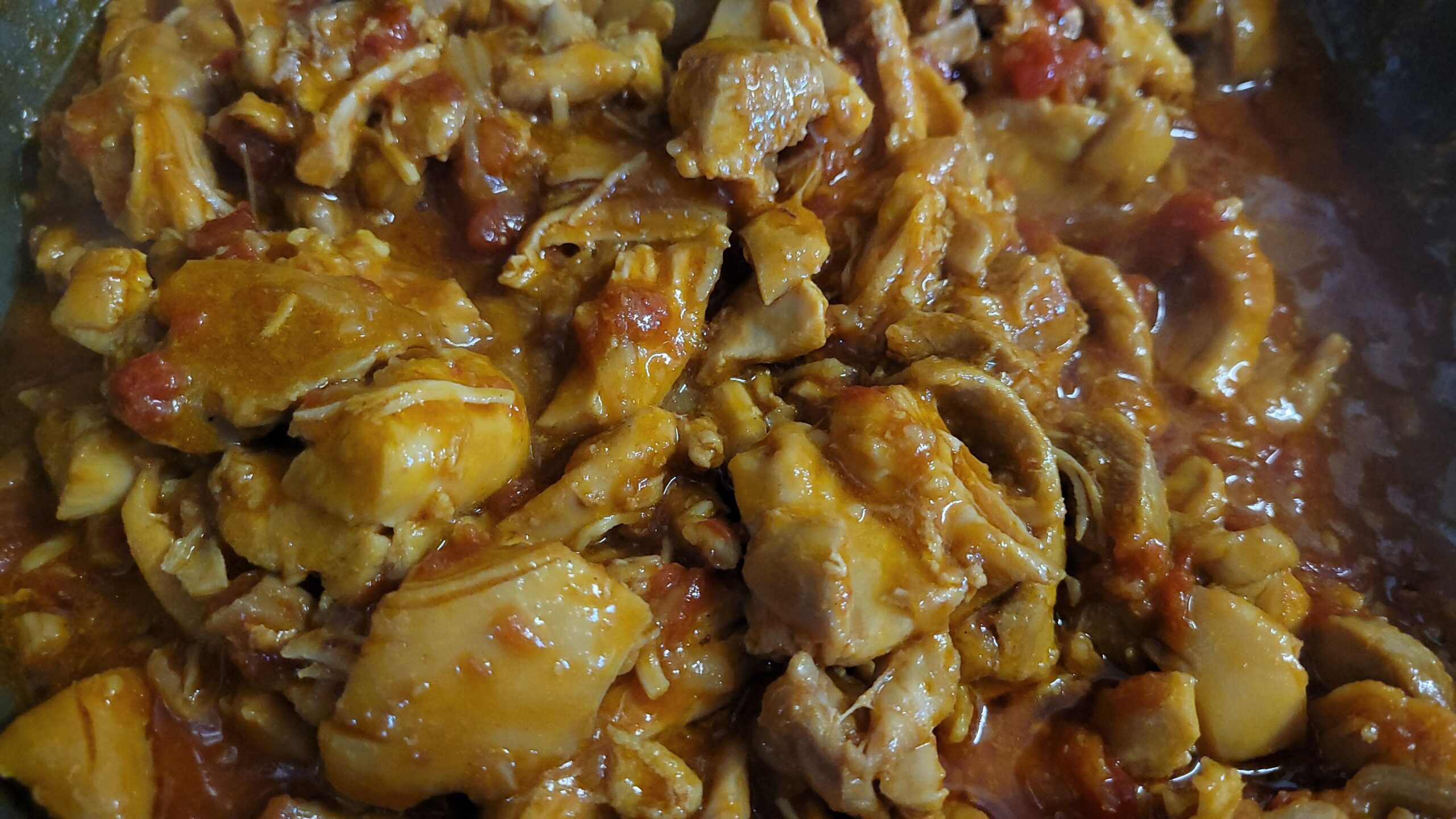Ingredients for EASIEST Chicken Curry Burmese Style
1 cup of oil
1 and ½ yellow onions for fried onion
1 yellow onions for gravy/sauce chopped and blended
6 garlic cloves
1 slice of ginger
2 tomatoes
2 tablespoon of onion flakes
1/2 tablespoon of garlic powder
1 teaspoon of ginger powder
5lb chicken thigh
32 oz chicken stock
1 stick lemongrass
2 tablespoon of fish sauce
1 teaspoon of turmeric powder
2 teaspoons of paprika
1 teaspoon of chili powder (optional)
15 curry leaves
directions
chop and sautéed onions till golden brown (1 ½ yellow onion)
blend one onion and 6 garlic cloves 1 slice of ginger and sautéed till soft and slightly golden brown
blend 2 tomatoes and add to the sautéed pan
2 tablespoon of onion flakes, 1/2 tablespoon of garlic powder, 1 teaspoon of ginger powder and sautéed for 2 mins
add 5lb chicken thigh, 32 oz chicken stock, 1 stick lemongrass, 2 tablespoon of fish sauce, 1 teaspoon of turmeric powder, 2 teaspoon of paprika, 1 teaspoon of chili powder(optional) . cook in instant pot for 15 mins natural release. add 15 curry leaves at the end.
Is EASIEST Chicken Curry Burmese Style different?
Yes, Burmese curry and Indian curry are different in terms of ingredients, flavors, and preparation methods, though they share some similarities due to geographical proximity and cultural influences. Here are some of the key differences:
- Ingredients: While both Burmese and Indian curries use a variety of spices, the specific spice blends and ingredients differ. Indian curries often feature a more extensive use of spices like cumin, coriander, cardamom, and garam masala. Burmese curries, on the other hand, rely heavily on ingredients like turmeric, ginger, and lemongrass, which give them a distinct flavor. Additionally, Burmese curries frequently include the use of fish sauce and fermented shrimp paste for added depth of flavor.
- Meat and Protein: Indian curries often use a wide range of proteins, including chicken, lamb, beef, and a variety of vegetables. Burmese curries prominently feature seafood, particularly fish and shrimp, due to Myanmar’s coastal location. However, Burmese cuisine also includes chicken and pork dishes.
- Texture and Consistency: Indian curries often have a sauce-like consistency, and they can be thick or thin, depending on the specific dish. In contrast, Burmese curries tend to have a drier, paste-like consistency, often sticking to the meat or vegetables they are cooked with.
- Accompaniments: Both Indian and Burmese curries are typically served with rice, but the type of rice used may vary. Indian cuisine often serves curries with basmati rice or various types of bread like naan or roti. In Myanmar, jasmine rice or glutinous (sticky) rice is more common.
- Spiciness: Indian curries can vary in spiciness, with some regions producing extremely hot dishes. Burmese curries, while they can be spicy, are often milder in comparison, with a focus on aromatic flavors.
- Herbs and Vegetables: Indian curries commonly include a variety of vegetables and herbs, such as tomatoes, potatoes, and coriander. In Burmese curries, the focus is on local herbs and vegetables, including water spinach, tamarind leaves, and banana flowers.
- Influence of Neighboring Countries: Myanmar’s cuisine is influenced not only by India but also by its Southeast Asian neighbors, resulting in a unique blend of flavors and ingredients not commonly found in Indian cuisine.
While both Burmese and Indian curries offer rich and flavorful dining experiences, the distinctions in ingredients, flavor profiles, and regional influences make them distinct culinary traditions.
Please check here for more recipes
please contact us here for any questions –
